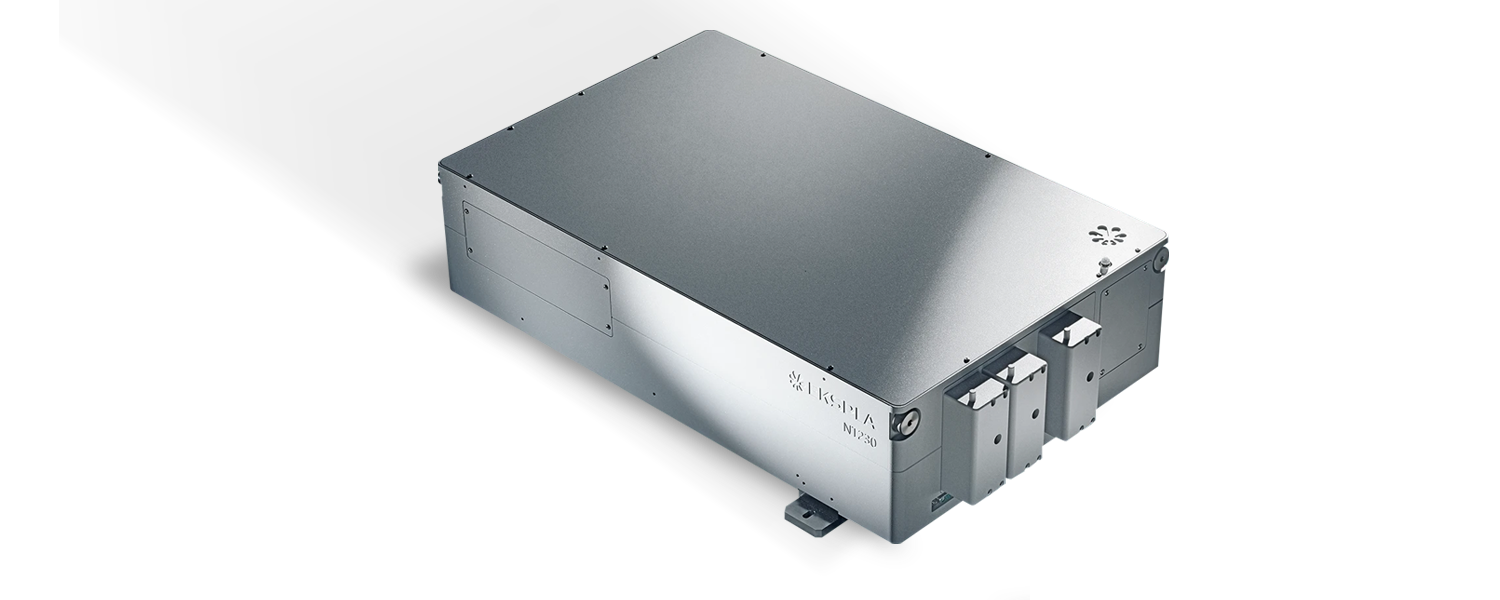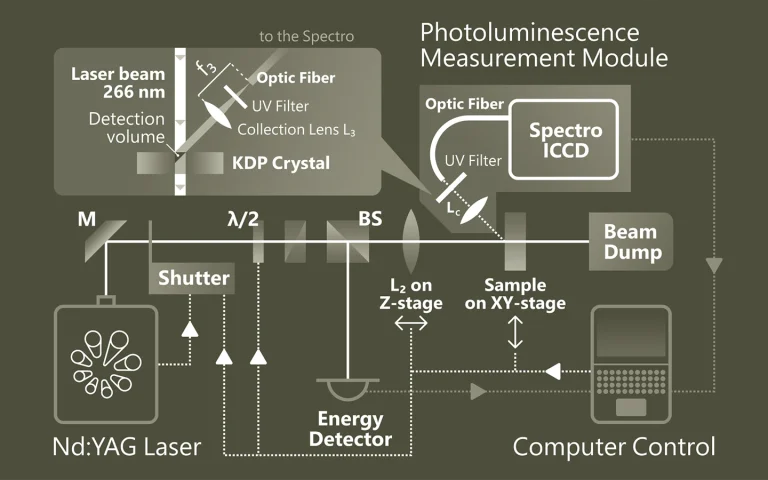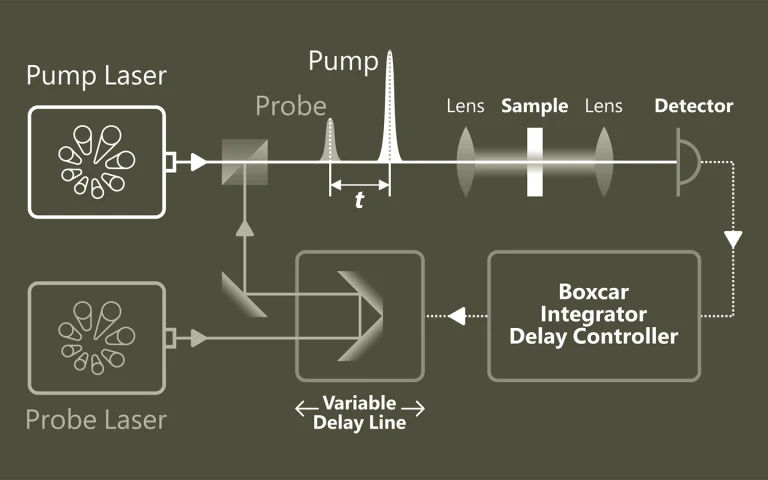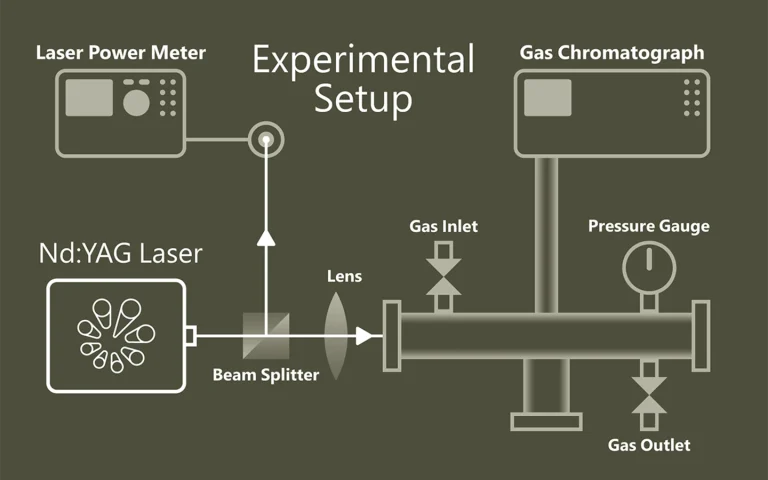NT230
Tunable diode-pumped laser with high pulse energy
The NT230 tunable laser offers seamless, motorized wavelength tuning from 192 to 2600 nm – from just one housing. With a repetition rate of 100 Hz, it can be used for a wide range of applications, e.g. for LIF, photolysis, photobiology, metrology and remote sensing.

Features
- Two-year warranty
- Integrates DPSS pump laser and OPO in one housing
- Motorized, gapless wavelength tuning from 192 to 2600 nm*
- Up to 15 mJ pulse energy from the OPO
- Up to 100 Hz pulse repetition rate
- Up to 2 mJ output pulse energy in the UV range
- Line width <5 cm-¹
- 2-5 ns pulse duration
- Electromechanical output locks
- 355 nm- 532 nm and 1064 nm laser outputs
- Remote control via keypad or PC
*Automatic wavelength scan is programmable
Applications
- Laser-induced
- Fluorescence
- Flash photolysis
- Photobiology
- Remote sensing
- Metrology
- Nonlinear spectroscopy
- Photoacoustic
- Imaging
Applications

Emission that provides insights
Photoluminescence spectroscopy (PL) is a non-contact method for investigating the electronic and structural properties of materials. The material is excited by light and the emitted radiation is analyzed. This spectral information provides information about band gaps, defects, doping or quantum structure. PL is particularly valuable for semiconductors, nanostructures and optoelectronic materials

Pumps. Samples. Understanding
Pump-probe spectroscopy provides a deep insight into ultrafast processes at the atomic and molecular level. With the help of pulsed lasers, dynamic changes can be tracked with extremely high temporal resolution. Typical applications include the investigation of charge carrier dynamics in semiconductors, the analysis of electron transfer in chemical reactions and the study of light-induced phase transitions in materials.

When light separates molecules
Photolysis describes the light-induced splitting of chemical compounds and plays a central role in photosynthesis through water splitting. Laser flash photolysis uses short, intense laser pulses (ns-fs) to generate short-lived intermediates such as radicals or excited states and to observe their temporally resolved absorption. Probe pulses record reaction processes. The use of OPOs significantly expands the possibilities of spectroscopic investigations.
Applications
Scientific publications
Electronic spectroscopy and nanocalorimetry of hydrated magnesium ions [Mg(H2O)n]+, n = 20-70: spontaneous formation of a hydrated electron?
T. Taxer, M. Ončák, E. Barwa, C. van der Linde, and M. K. Beyer, Faraday Discuss. 217, 584-600 (2019). DOI: 10.1039/C8FD00204E.
Hydrated singly charged magnesium ions [Mg(H 2O) n] + are thought to consist of an Mg 2+ ion and a hydrated electron for n > 15. this idea is based on mass spectra, which exhibit a transition from [MgOH(H 2O) n-1] + to [Mg(H2O)n]+ around n = 15-22, black-body infrared radiative dissociation, and quantum chemical calculations. Here, we present photodissociation spectra of size-selected [Mg(H2O)n]+ in the range of n = 20-70 measured for photon energies of 1.0-5.0 eV. The spectra exhibit a broad absorption from 1.4 to 3.2 eV, with two local maxima around 1.7-1.8 eV and 2.1-2.5 eV, depending on cluster size. The spectra shift slowly from n = 20 to n = 50, but no significant change is observed for n = 50-70. Quantum chemical modeling of the spectra yields several candidates for the observed absorptions, including five- and six-fold coordinated Mg2+ with a hydrated electron in its immediate vicinity, as well as a solvent-separated Mg2+/e– pair. The photochemical behavior resembles that of the hydrated electron, with barrierless interconversion into the ground state following the excitation.
Luminescence spectroscopy of oxazine dye cations isolated in vacuo
C. Kjær, and S. B. Nielsen, Phys. Chem. Phys. 21, 4600-4605 (2019). DOI: 10.1039/C8CP07340F.
Here we report gas-phase action and luminescence spectra of cationic dyes derived from oxazine: cresyl violet (CV+), oxazine 170 (Ox-170+), nile blue (NB+), darrow red (DR+), oxazine 1 (Ox-1+), oxazine 4 (Ox-4+), and brilliant cresyl blue (BCB+). The first four have a benzofused structure, which results in asymmetric charge distributions along the long axis. The positive charge is also asymmetrically distributed in BCB+ while Ox-1+ and Ox-4+ are symmetric. As the ions are isolated in vacuo, there are no interactions with solvent molecules or counter ions, and the effect of chemical modifications is therefore more easily revealed than from solution-phase experiments. The transition energy decreases in the order: DR + > CV+ > Ox-4+ > Ox-170+ > BCB+ > Ox-1+ > NB+, and the fluorescence from BCB+ is less than from the others. We discuss the results based on electron delocalization, degree of charge-transfer character, rigidity of the chromophore structure, and substituents.
Photodissociation of Sodium Iodide Clusters Doped with Small Hydrocarbons
C. Kjær, and S. B. Nielsen, Phys. Chem. Phys. 21, 4600-4605 (2019). DOI: 10.1039/C8CP07340F.
Marine aerosols consist of a variety of compounds and play an important role in many atmospheric processes. In the present study, sodium iodide clusters with their simple isotope pattern serve as model systems for laboratory studies to investigate the role of iodide in the photochemical processing of sea-salt aerosols. Salt clusters doped with camphor, formate and pyruvate are studied in a Fourier transform ion cyclotron resonance mass spectrometer (FT-ICR MS) coupled to a tunable laser system in both UV and IR range. The analysis is supported by ab initio calculations of absorption spectra and energetics of dissociative channels. We provide quantitative analysis of IRMPD measurements by reconstructing one-photon spectra and comparing them with the calculated ones. While neutral camphor is adsorbed on the cluster surface, the formate and pyruvate ions replace an iodide ion. The photodissociation spectra revealed several wavelength-specific fragmentation pathways, including the carbon dioxide radical anion formed by photolysis of pyruvate. Camphor and pyruvate doped clusters absorb in the spectral region above 290 nm, which is relevant for tropospheric photochemistry, leading to internal conversion followed by intramolecular vibrational redistribution, which leads to decomposition of the cluster. Potential photodissociation products of pyruvate in the actinic region may be formed with a cross section of <2×10-20cm2, determined by the experimental noise level.
